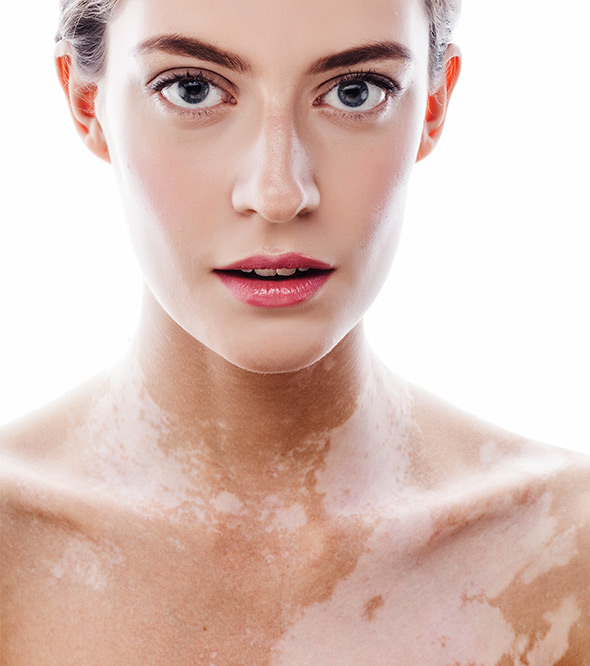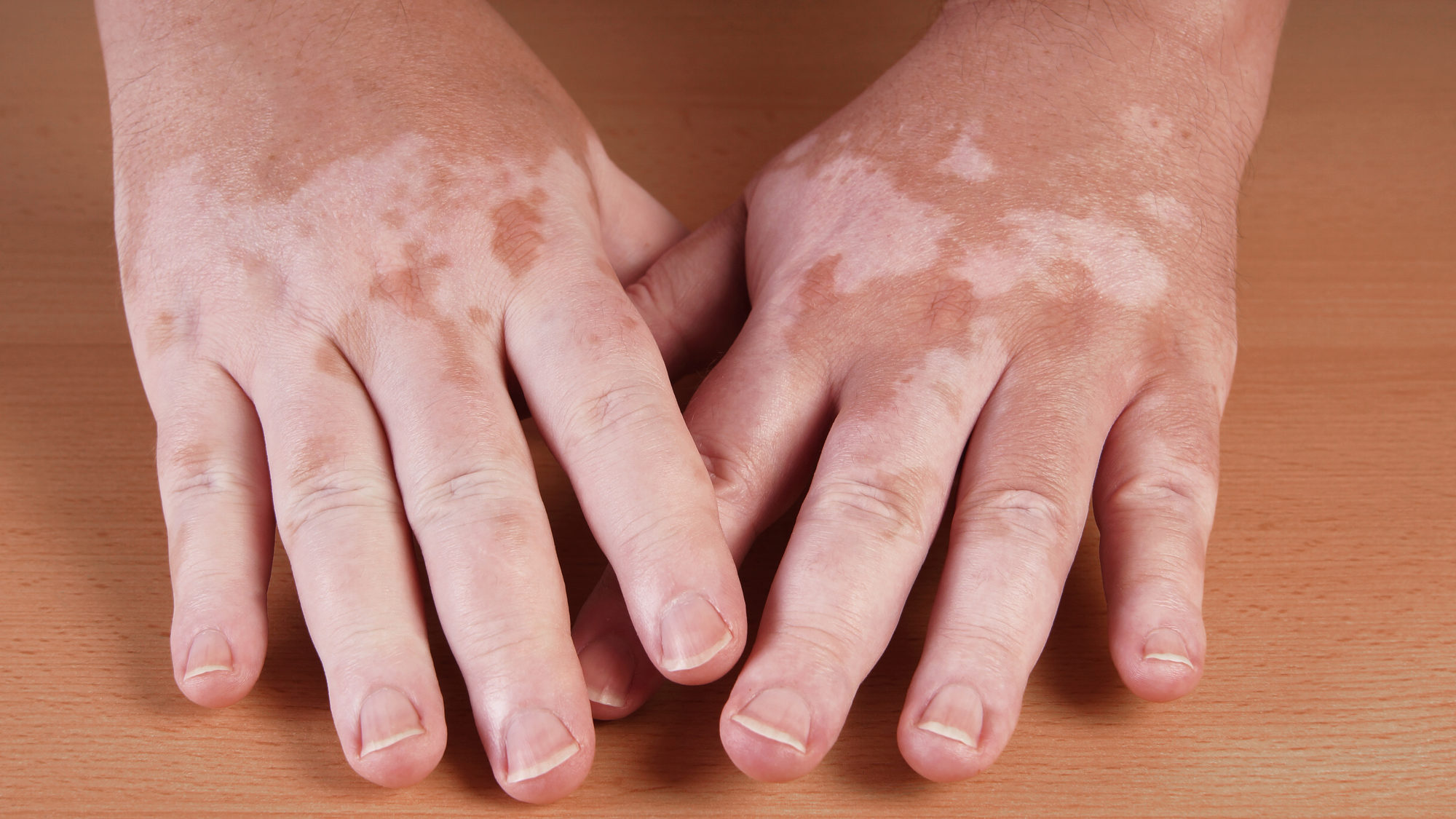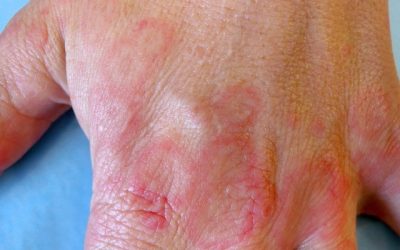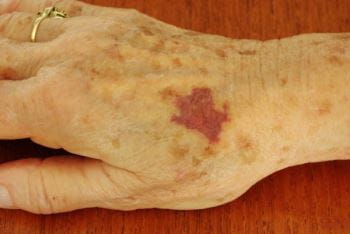Vitiligo – Why Do White Patches Appear on the Skin and How to Treat Them?

Introduction
Vitiligo is a chronic, non-contagious skin condition characterized by the loss of pigment in certain areas of the skin. While it does not pose a direct threat to physical health, vitiligo can cause significant aesthetic and emotional discomfort. White patches on the skin become particularly noticeable in the summer, when tanned skin contrasts sharply with depigmented areas. In this article, we will explore what vitiligo is, its causes, how it is diagnosed, and what treatment options are currently available.
What is Vitiligo?
Vitiligo is a pigmentation disorder in which the immune system mistakenly attacks melanocytes – the cells responsible for producing melanin (the natural pigment of the skin). As a result, the affected areas lose their color, forming clearly defined white patches. The condition can appear at any age and affects both men and women equally.

Types of Vitiligo
- Generalized vitiligo – white patches are symmetrically distributed on both sides of the body.
- Segmental vitiligo – patches appear on one side of the body, most commonly in children or adolescents.
- Focal vitiligo – isolated patches in one or several areas.
- Universal vitiligo – a very rare case where pigment is lost across almost the entire body.
Causes and Risk Factors
- Autoimmune reaction – the main cause of vitiligo.
- Genetic predisposition – hereditary factors are found in about 20–30% of cases.
- Physical trauma or skin injury – can trigger new patches (Koebner phenomenon).
- Stress – may contribute to the onset or worsening of the disease.
- Autoimmune diseases – such as Hashimoto’s thyroiditis or type 1 diabetes.
Symptoms
- White or light patches on the skin
- Clear borders between pigmented and depigmented skin
- Common areas: face, hands, knees, elbows, around the eyes, mouth, and genitals
- Hair may lose pigment
- Usually painless, with no itching or physical discomfort
When to See a Doctor
- When new or spreading white patches appear
- If vitiligo affects emotional well-being
- If you have other autoimmune conditions or a family history
- When it’s necessary to differentiate from other skin disorders (e.g., fungal infections or pigmentation issues)
Diagnosis
- Visual examination – an experienced dermatologist can often diagnose vitiligo during a physical exam.
- Wood’s lamp (UV light) – helps to clearly identify depigmented areas. Under Wood’s lamp, vitiligo patches glow whitish, making it easier to distinguish from other conditions.
- Blood tests – can help detect associated autoimmune diseases.
Treatment Options
⚠️ All treatment methods must be prescribed by a dermatologist. Self-treatment is not recommended.
Topical Treatments
- Dermatological creams and ointments may be prescribed to restore pigmentation or slow disease progression.
- Not all products are suitable for every skin type – an individual evaluation is necessary.
Phototherapy
- Narrowband UVB therapy – considered one of the most effective methods.
- Treatment is carried out in clinics under specialist supervision.
- Consistency and patience are essential – results are usually seen after several months.
Procedural Methods
- Micropigmentation (medical tattooing) – may be used for aesthetic correction.
- Depigmentation therapy – applied only in rare cases where pigment loss is widespread.
Psychological Support
- Many patients experience emotional stress, especially during youth.
- Psychological counseling or support groups are recommended.
Care and Prevention
- Use sunscreen daily (SPF 50+)
- Avoid skin injuries and harsh cosmetic products
- Maintain a healthy lifestyle: sleep, nutrition, stress management
- Visit a dermatologist regularly
- Choose cosmetics that are fragrance-free and alcohol-free
Up to 2% of the world’s population is affected by vitiligo — a condition that does not cause physical pain but often harms self-confidence.
Frequently Asked Questions (FAQ)
Can vitiligo be cured? A complete cure is not yet available, but various methods can help manage symptoms.
Is vitiligo hereditary? A genetic predisposition is possible, but the condition does not always develop.
Can makeup be used? Yes, decorative cosmetics can help cover the patches and improve emotional well-being.
Can vitiligo spread? In some cases, yes — but it varies greatly from person to person.
Is tanning safe? No, depigmented skin is highly sensitive to UV radiation.
Conclusion
Vitiligo is a non-contagious skin disorder that poses aesthetic and psychological challenges. While researchers worldwide continue to search for a definitive cure, there are already various effective methods available to slow progression, restore pigmentation, and improve quality of life.
⚡️ Noticed changes in your skin pigmentation or have questions? Contact the specialists at “iDerma” for professional, personalized, and safe solutions.
Every case of vitiligo is unique, but modern dermatology offers increasing opportunities to live confidently — either by accepting your skin as it is or restoring it.


Sources
1. Alikhan A, Felsten LM, Daly M, Petronic-Rosic V. Vitiligo: A comprehensive overview Part I. Introduction, epidemiology, quality of life, diagnosis, differential diagnosis, associations, histopathology, etiology, and work-up. J Am Acad Dermatol. 2011 Sep;65(3):473-491.
2. Taïeb A, Picardo M. Clinical practice. Vitiligo. N Engl J Med. 2009 Sep 3;361(9): 843–850.
3. Ezzedine K, Eleftheriadou V, Whitton M, van Geel N. Vitiligo. Lancet. 2015 Jul 11;386(9988):74-84.
4. Whitton ME, Pinart M, Batchelor J, et al. Interventions for vitiligo. Cochrane Database Syst Rev. 2015 Feb 25;(2):CD003263.
5. Rodrigues M, Ezzedine K, Hamzavi I, Pandya AG, Harris JE. Current and emerging treatments for vitiligo. J Am Acad Dermatol. 2017 Jul;77(1):17-29.
6. Gawkrodger DJ, Ormerod AD, Shaw L, et al. Guideline for the diagnosis and management of vitiligo. Br J Dermatol. 2008 Jul;159(5):1051–1076.
7. Ezzedine K, Lim HW, Suzuki T, et al. Revised classification/nomenclature of vitiligo and related issues: the Vitiligo Global Issues Consensus Conference. Pigment Cell Melanoma Res. 2012 May;25(3):E1-E13.
8. Njoo MD, Westerhof W. Vitiligo: pathogenesis and treatment. Am J Clin Dermatol. 2001;2(3):167–181.
Erythema multiforme
an acute and often relapsing disease of mucous membranes and skin characterized by a specific target-shaped rash.
Purpura Simplex
A hematological disease characterized by an increased tendency to form bruises (bruises) due to increased fragility of blood vessels.
Furuncle
Furuncle (or boil) – a deep inflammation involving the hair follicle and surrounding tissues.




